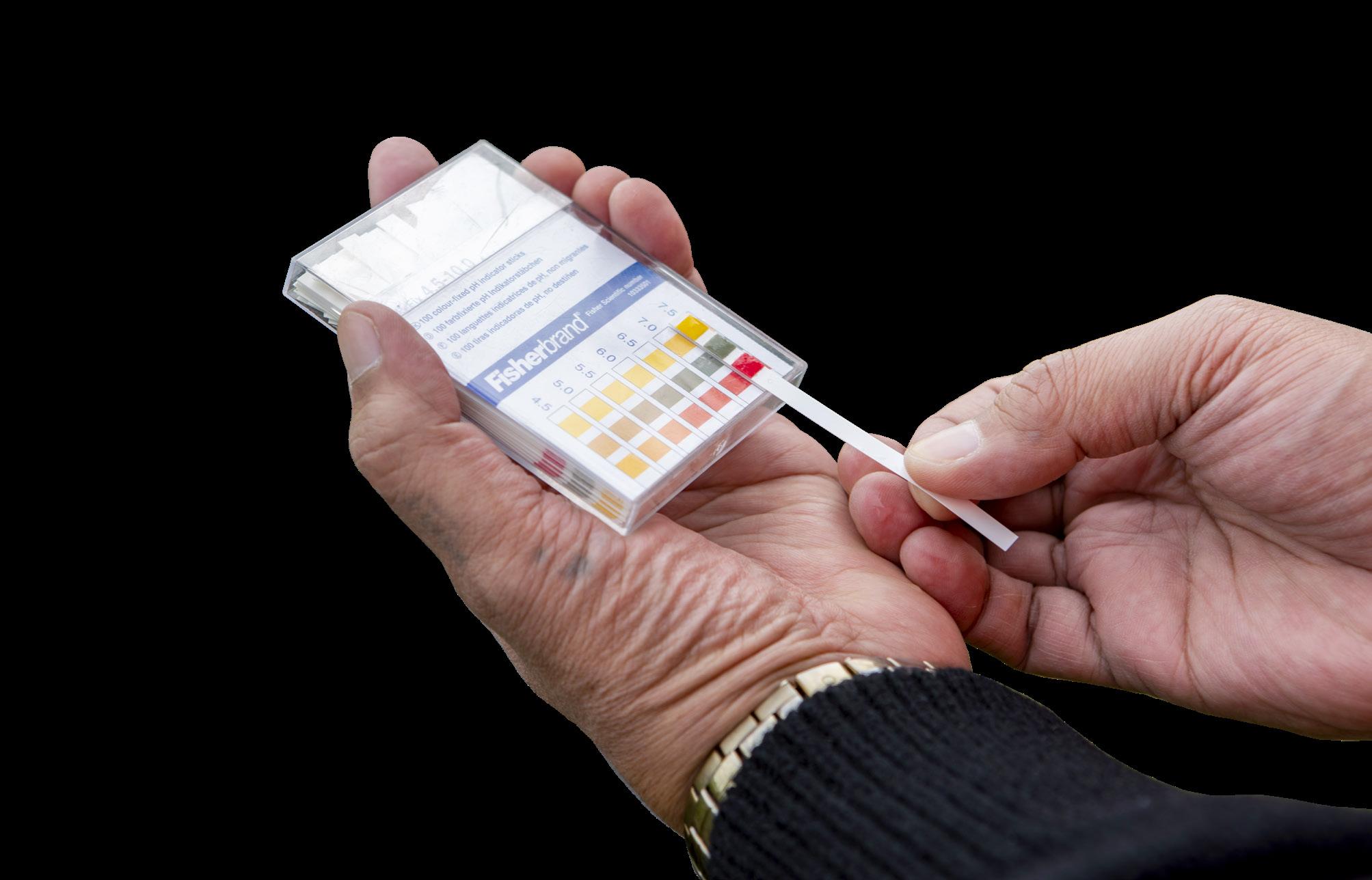
4 minute read
Benchmark data drives kaitiakitanga strategy
A comprehensive environmental monitoring programme has established a biodiversity baseline for rivers and streams flowing through Parininihi ki Waitotara whenua. The water monitoring data collected over the past year formed part of the first phase of the Parininihi ki Waitotara (PKW) Kaitiakitanga Strategy.
The Strategy sets out PKW responsibilities and aspirations to build an environmentally sustainable, inter-generational business that leaves healthy whenua and water for the generations to come.
Mitchell Ritai, General Manager Shareholder Engagement, says monitoring carried out on most of PKW’s 23 farms has provided information needed to assess waterway health, measure the effectiveness of environmental management efforts, and identify where further work may be needed to protect water quality, flora and fauna.
A cultural health index tool has also been developed using mātauranga Māori to complement the scientific data being used assess the waterways.
“This ground-breaking approach allows us to take a more holistic approach by assessing the mauri of the water from the perspective of both western science and mātauranga Māori,” Mitchell says. “This data allows us to understand the health of key waterways connected with PKW land management, and to measure the impact of our activities.”
Results show PKW water health ranges in general between moderate and excellent. “There are some factors like high pH that could suggest negative impact from upstream activity, and we hope to zero in on these impacts with further monitoring.”

Above: Indicator used to measure pH level of stream water.
The ongoing programme will also identify and measure any changes in water quality. In addition, the development of a Precision Farming dashboard will help PKW to understand how much water is being used and find ways to improve water use efficiency.
Shane Miles, General Manager Ahuwhenua, said the ongoing commitment to deliver on kaitiakitanga aspirations is a key pou to the intergenerational success of PKW’s farming business.
In terms of biodiversity, stock exclusion from the waterways was achieved some years ago as a first step. From ground zero, we moved to developing some significant effluent management systems.
“We are currently working through the final stages of our riparian management plans and have also turned our attention to the protection and regeneration of wetland areas.”
PKW has also recently engaged with the Taranaki Regional Council as part of its Key Native Ecosystems initiative, working in partnership to identify and protect some of these key areas, with a view to helping them regenerate over time.
“We have already been able to identify some key wetlands that can be retired and protected, and thousands of natives have been planted in riparian strips and wetlands,” Shane said. “To give some idea of the scale of planting, more than 20,000 plants have been delivered to our farms in the past couple of weeks to continue our mahi in this area.”
“Dairy farms have had our priority attention historically, and we have concentrated our efforts there in conjunction with the Council. Taranakiwide, the focus has been on the lowland ring-plain pastures and waterways around the maunga.”
Most planting at PKW is carried out by the Ngaa Rauru Kiitahi planting team from Kii Tahi Nursery & Landcare. “Kii Tahi have been a key partner for many years in the work PKW has done in the riparian planting space, and we acknowledge and thank them and their kaimahi for their efforts over the years.”
“Planting is a key component of biodiversity regeneration of freshwater, and fish, stream and bird life. We are focusing on completing work in this area, to bring back the biodiversity to these waterways.

Above: Results show where future focus needs to be.
As part of the monitoring, a fish survey was completed, with short-fin tuna and kōura caught and released, putting sustainable cultural harvesting on the table for discussion once again.
“Our shareholder surveys and kōrero with whānau about reconnecting with the land always raise cultural harvesting,” Mitchell says. “We will assess whether sustainable populations exist. If they do, we will look at ensuring safe access.
“We want to go beyond compliance. Our Kaitiakitanga Strategy encourages us to set the bar higher than what is expected of us – to do more, to be better ancestors for our mokopuna, and to work hard in the areas of biodiversity, advocacy and reconnection with our whenua.










